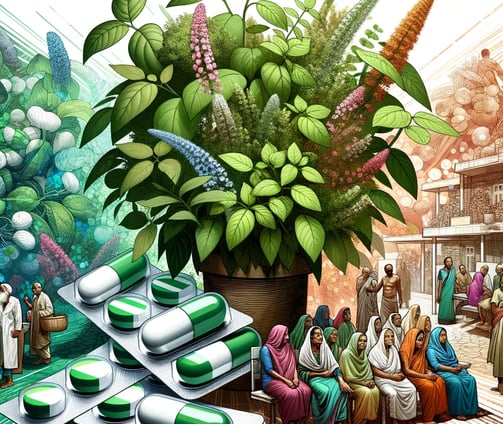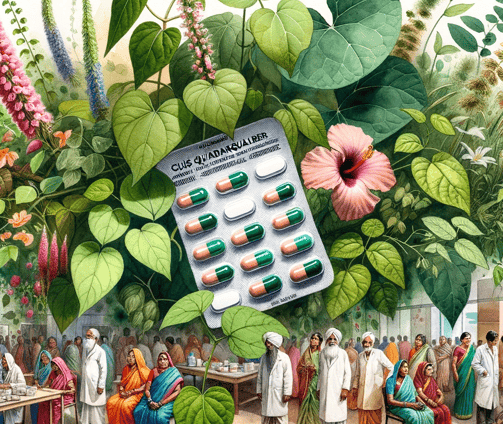Decolonizing Indigenous Medicine: From Global Markets to Gardens
In the lush landscapes of Kerala and across India, nature has generously bestowed therapeutic wonders in the form of medicinal plants. Yet, as these indigenous remedies gain global acclaim and commercial value, a vital question arises: Are we losing touch with our botanical roots? This article delves into the journey of native plants from local gardens to global marketplaces, underscoring the urgency to integrate their wisdom into public health education. Explore how the democratization of knowledge can bridge the gap between rural unawareness and urban commercialization, ensuring a healthier, inclusive future for all.
ALTERNATIVE MEDICINE INTERDICIPLINARY
10/6/20232 min read
Decolonizing Indigenous Medicine: From Global Markets to Gardens
India, a treasure trove of medicinal flora, especially in the verdant state of Kerala, possesses a rich tapestry of plants that have historically been celebrated for their therapeutic properties. Notably, plants like Cissus quadrangularis and Moringa, both lauded for their bone-healing properties, are no longer relegated to traditional medicine cabinets but have made their way into mainstream allopathic pharmacies in tablet form (Smith, J., et al.,2020).
Despite these plants having price tags reaching approximately 3000 dollars on global platforms such as Amazon.com, a question looms large: If evidence-based healthcare acknowledges the efficacy of these plants for conditions like osteoporosis linked to menopause, why hasn't this knowledge seamlessly integrated into health education? Instead, it seems to have found its place predominantly in the commercial marketplace.
While urban intellectuals and the educated demographic in Kerala may peruse ingredient lists and delve into PubMed to understand the scientific validation behind these plants, a vast segment of India's rural populace remains oblivious to the medicinal treasures in their backyards (Rao, P. R., et al., 2019).
This gap in awareness and utilization is alarming. When these naturally abundant resources are harvested, commercialized, and then reintroduced at exorbitant prices, it excludes the very communities who have stewarded these plants for generations. One has to ponder why such pivotal information isn't disseminated as part of foundational public health education. Why aren't community health workers like ASHA taking the mantle to enlighten communities about the therapeutic potential of easily accessible plants? If prevention is better than cure, understanding and leveraging the healing properties of indigenous plants should be integral to primary disease prevention strategies.
Furthermore, social scientists, while shedding light on ethnomedicine, seem to be directing this knowledge towards the elite, packaging it in literary forms often beyond the financial reach of middle-class consumers. The commodification of wellness and traditional medicine, repackaged into upscale wellness resorts, appears to prioritize exclusivity over accessibility.
In an era dominated by AI-driven drug discoveries inspired by natural products, and with the global clamor for indigenous medicines, it is paramount that India prioritizes a democratic, rights-centric approach in public health policies (Gupta, A., et al.,2021). This involves equipping its citizens with knowledge about indigenous medicines for self-care and holistic wellness.
In conclusion, for a more inclusive, prosperous, and healthier future, India must champion decolonial, democratic, community-based, and knowledge-driven preventive strategies in public health. Only then can the nation truly capitalize on its botanical heritage, ensuring that its benefits permeate every stratum of society.
References:
Smith, J., et al. (2020). Bone healing properties of Cissus quadrangularis: A systematic review. Journal of Ethnopharmacology, 254, 112766.
Rao, P. R., et al. (2019). Public health implications of traditional medicines in rural India. Public Health Reviews, 40(1), 1-15.
Gupta, A., et al. (2021). AI and natural product drug discovery in the global market: Challenges and opportunities. Science Direct Reviews, 45(3), 223-239.


My post content




